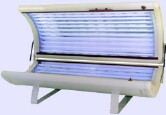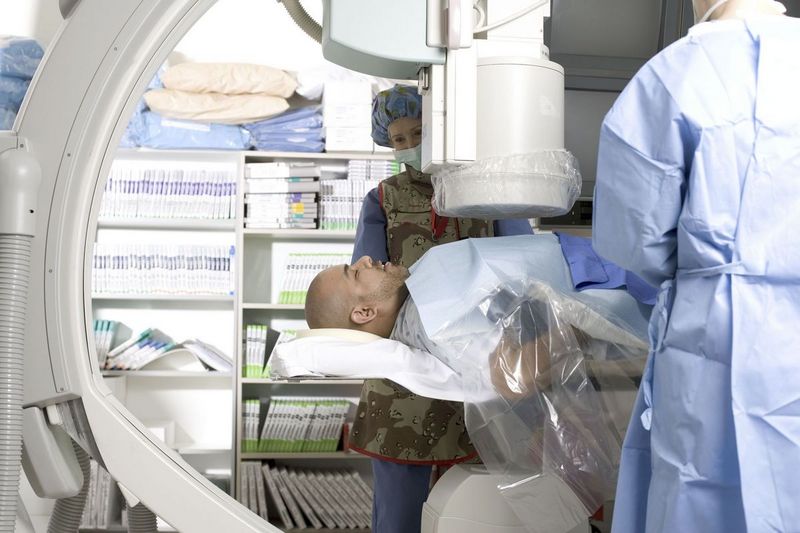
THURSDAY, May 29, 2014 (HealthDay News) — Just in time for summer, the U.S. Food and Drug Administration announced on Thursday that tanning beds and tanning booths now must carry a visible warning explicitly stating that the devices should not be used on people under age 18.
“There’s mounting evidence showing that indoor tanning in childhood and early adult life further increases risk of melanoma later in life due to greater lifetime exposure,” Nancy Stade, deputy director for policy at the FDA’s Center for Devices and Radiological Health, said in a press conference announcing the order.
However, the order does not outright ban teen use of tanning beds. “It reflects a very strong statement by the FDA that they should not be used by individuals under age 18,” Stade said.
The CDC estimates that about 13 percent of all high school students have used indoor tanning, Stade said. Teenage girls are most likely to use the devices, with 32 percent of all 12th grade girls reporting that they had used a tanning bed.
The FDA will also require manufacturers to warn in their advertisements and marketing materials that these and other tanning devices put users at greater risk for skin cancer, the agency said in a news release.
The FDA’s order on the issue also reclassified sunlamps and UV lamps from low-risk to moderate-risk devices.
“The FDA has taken an important step today to address the risk to public health from sunlamp products,” Dr. Jeffrey Shuren, director of the FDA’s Center for Devices and Radiological Health, said in the agency new release. “Repeated UV exposure from sunlamp products poses a risk of skin cancer for all users — but the highest risk for skin cancer is in young persons under the age of 18 and people with a family history of skin cancer.”
Tanning beds and sunlamps emit UV rays that have been linked to skin cancer, burns, premature skin aging and eye damage, the FDA said.
People who have been exposed to UV radiation from indoor tanning experience a 59 percent increase in the risk of melanoma, the deadliest type of skin cancer, according to the American Academy of Dermatology.
“The risk increases with each use, which presents a serious health public health problem for children under 18,” Stade said.
According to the FDA, one required warning will read: “Persons repeatedly exposed to UV radiation should be regularly evaluated for skin cancer.”
One skin cancer expert applauded the FDA’s move.
“Hindsight is 20/20, but what we need is foresight, something that most teenagers do not have with their skin,” said Dr. Joshua Zeichner, director of cosmetic and clinical research in the department of dermatology at The Mount Sinai Hospital in New York City.
“I support this legislation as it will help protect the health of youth, who may feel invincible, but in reality are at the most risk because they are not properly protecting their skin from the harmful effects of UV light,” he said.
Under the new rule, manufacturers will now have to apply for FDA approval prior to marketing indoor tanning devices, which until now were exempt from premarket review. They will have to show that the devices meet basic standards of performance and product design.
The FDA’s final order reclassifying tanning beds and sunlamps follows the recommendations from a panel of outside experts convened in March 2010. The panel evaluated the risks of sunlamp products, and recommended that FDA increase regulation of these devices. Certain members of the panel recommended that children and teenagers not use the products.
The agency released a proposed order on indoor tanning devices in May 2013, and received comments from industry, patient groups and professional societies before issuing its final order a year later.
More information
There’s more on the skin cancer-tanning link at the Skin Cancer Foundation.
Copyright © 2025 HealthDay. All rights reserved.

